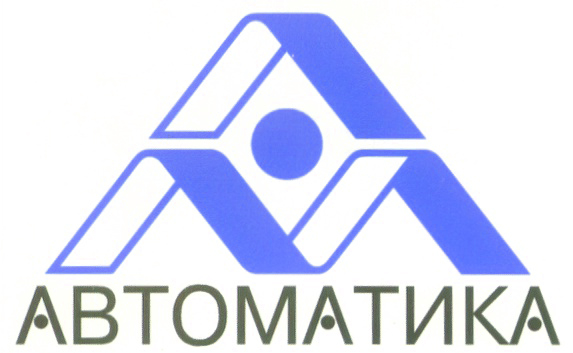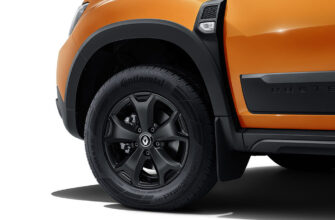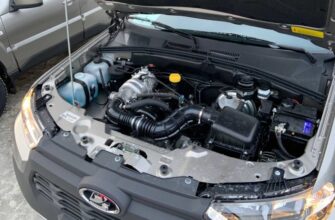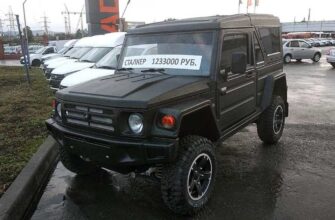- 1996 Chevrolet Impala Used Price Estimates
- Chevrolet Impala обзор и история
- 1995 Chevrolet Impala Used Price Estimates
- History, origin and salesEdit
- Second generation (1959–1960)Edit
- ExportsEdit
- 1963Edit
- 1964Edit
- ExportsEdit
- Impala SS (1961–1969)Edit
- Fourth generation (1965–1970)Edit
- ExportsEdit
- Fifth generation (1971–1976)Edit
- Sixth generation (1977–1985)Edit
- Seventh generation (Impala SS, 1994–1996)Edit
- PerformanceEdit
- DiscontinuationEdit
1996 Chevrolet Impala Used Price Estimates
Estimates based on a driving average of 12,000 miles per year
Used ConditionTrade In PricePrivate Party PriceDealer Retail Price
Outstanding$ 7,881$ 12,870$ 15,408Clean$ 6,943$ 11,365$ 13,648Average$ 5,065$ 8,357$ 10,130Rough$ 3,187$ 5,348$ 6,611
Джордж Торогуд, должно быть, имел в виду что-то вроде импалы, когда писал «до мозга костей». Этот автомобиль грозен монохромной окраской, широкими шинами и толстыми сплавами. 5,7-литровый v8 пульсирует под капотом, а в выхлопе написано: «Не связывайся со мной». Ретро импала SS от Chevy доставляет товары, и делает это, не считаясь плохой шуткой.
Основываясь на пакете Caprice Police, Chevy рассматривает две наши жалобы на Impala SS в 1996 году. Тахометр был добавлен к комбинации приборов, а напольный переключатель передач украшает центральную консоль. в остальном интерьер строго капризен, что является единственным оставшимся недостатком СС. в то время как сиденья с кожаной отделкой обеспечивают немного большую поддержку, чем скамейка Caprice, но вы не перепутаете их с recaros. остальное на месте: удивительно красивый внешний вид, отличная производительность и цена, не вызывающая сердечной недостаточности.
однако, очевидно, что GM не знает, когда у него начнутся хорошие дела. посмотрите на Pontiac Fiero GT 1988 года выпуска. Спустя пять лет у машины наконец-то появился нужный двигатель, стиль и подвеска, чтобы конкурировать на арене спортивных купе, и генерал убил ее. теперь, после нескольких лет на рынке, они, наконец, получают усовершенствованную версию Caprice, а затем отключают ее. мы обычно не рассуждаем о возможности коллекционирования какой-либо конкретной машины, но если учесть, что импала ограниченного производства умирает после короткого трехлетнего пробега, а окончательные модели включают тахометр и напольный переключатель, а также зеленый, серый или темный вишня, вероятно, менее популярный цвет, импала сс выглядит как хорошее вложение.
Производство Caprice и Impala планируется прекратить в декабре 1996 года. Не волнуйтесь, lumina, по слухам, продолжит традицию ss с 3,4-литровым двигателем v6, заниженной подвеской и яркими колесами. почему-то мы сомневаемся, что в исполнении он будет почти таким же волшебным, как импала.
Chevrolet Impala обзор и история
Шевроле — это автомобильный эквивалент кошачьих, накачанных генными стероидами. За свирепым котом ухаживал швейцарский автогонщик Луи Шевроле и бизнесмен, возродивший Buick и бывший глава GM Уильям Дюрант, как совместное предприятие, начавшееся в 1910 году. Вскоре после того, как Дюрант был вынужден уйти из GM, он стал партнером Chevrolet, с которым он работал ранее работал в своей гоночной команде Buick, чтобы восстановить утраченную популярность.
штаб-квартира Chevy была расположена в Детройте, и недавно созданный бренд был крещен, получив свой знаменитый логотип «галстук-бабочка» в 1913 году. Существует несколько гипотез относительно того, как появился дизайн логотипа, две из которых наиболее близки к единодушному признанию. одна из теорий намекает на то, что логотип был разработан после того, как Дюрант увидел плакат во французском отеле, в то время как вторая утверждает, что «галстук-бабочка» на самом деле является стилизованным изображением креста со швейцарским флагом.
независимо от того, как он возник, золотой логотип Chevy сохранился. Фактически, бренд рос такими быстрыми темпами, что позволил Дюранту вернуть себе право собственности на GM в 1916 году. Став достаточно богатым, Дюрант купил огромные 54,5 процента акций GM, восстановив себя во главе автомобильной империи.
Вскоре после поглощения Chevrolet была поглощена GM, став отдельным подразделением. Получив еще больше сил после слияния, вновь образованное предприятие быстро запустило производство и в 1918 году запустило в производство модель D. Двигатели V8 мощностью 35 л. , установленные на этих автомобилях, были заменены на 6-цилиндровые меньшего размера, которые оказались особенно успешными на коммерческом рынке. транспортных средств. Двигатель получил репутацию благодаря своей высокой прочности и получил прозвище «чугунное чудо».
Лишь несколько лет спустя Chevy представил внедорожник в его архаической форме: пригородную сумку. Спортивная езда по пересеченной местности, вместимость 8 человек и вес около 1½ тонны, положила начало будущей линейке внедорожников Chevy.
Американский производитель продолжил серию успешных инноваций, представив в 1950 году трансмиссию powerglide, став первым недорогим конкурентом, который оснастил свои автомобили автоматическим переключением передач. вскоре после появления полностью автоматической трансмиссии родился легендарный корвет.
Vette получил такой положительный отклик, что остался самой продолжительной моделью Chevy в истории бренда, а также первым американским спортивным автомобилем, запущенным в массовое производство. В то время vette также впервые продемонстрировал использование легких строительных материалов для кузова автомобиля, таких как пластик.
После одобрения, полученного от выпуска ветеринара, Chevy запустила несколько других моделей, в том числе яркую импалу и недолговечный корвейр с воздушным охлаждением. в течение 60-х годов Chevy достигла пика продаж с 3 автомобилями из 10, проданных в США. однако, прежде чем были достигнуты такие характеристики, Chevy разработала новый двигатель V8 с малым блоком, который использовался для оснащения грузовиков линейки ’55.
Этот конкретный двигатель дожил до сегодняшнего дня, претерпев множество модификаций, начиная от легкой и прочной алюминиевой конструкции до управляемого электронного блока управления и современного впрыска топлива для лучшей дозировки и увеличения мощности.
Хотя Chevy в последние несколько лет регистрирует снижение продаж из-за неконтролируемого расширения бренда, некоторые из автомобилей, украшенных «галстуками-бабочками», стали либо культовой классикой, либо винтажными предметами коллекционирования, четырехколесными иконами как напоминанием о былой эпохе славы.
1995 Chevrolet Impala Used Price Estimates
Estimates based on a driving average of 12,000 miles per year
Used ConditionTrade In PricePrivate Party PriceDealer Retail Price
Outstanding$ 6,855$ 11,807$ 14,334Clean$ 6,039$ 10,427$ 12,697Average$ 4,405$ 7,666$ 9,424Rough$ 2,772$ 4,906$ 6,150
History, origin and salesEdit
The Impala was introduced for the 1958 model year as top-of-the-line Bel Air 2-door hardtops and convertibles. From the windshield (A) pillar rearward the 1958 Bel Air Impala differed structurally from the lower-priced Chevrolet models. Hardtops had a slightly shorter greenhouse and longer rear deck. The wheelbase of the Impala was longer than the lower-priced models, although the overall length was identical. Interiors held a two-spoke steering wheel and color-keyed door panels with brushed aluminum trim. No other series included a convertible.
A coil spring suspension replaced the previous year’s rear leaf springs, and an air ride system was optional.
- 1958 Chevrolet Bel Air Impala Sport Coupe
- 1958 Chevrolet Bel Air Impala Convertible
Second generation (1959–1960)Edit
The Impala became a separate series, adding a four-door hardtop and four-door sedan to the two-door Sport Coupe and convertible. Sport Coupes featured a shortened roof line and wrap-over back window. The standard engine was an I6, while the base V8 was the carryover 283 cu in (4. 6 L), at 185 hp (138 kW). Optional were a 283 cu in with 290 hp (220 kW) and 348 cu in (5. 7 L) V8 up to 335 hp (250 kW). Standard were front and rear armrests, an electric clock, dual sliding sun visors, and crank-operated front vent windows. A contoured hooded instrument panel held deep-set gauges. A six-way power seat was a new option, as was «Speedminder», which allowed the driver to set a needle at a specific speed, which triggered a buzzer when exceeded.
The 1960 Impala models reinstated three round taillights on each side, and a white band running along the rear fenders.
- 1959 Chevrolet Impala 4-Door Sedan
- 1959 Chevrolet 4-Door Sedan
- 1959 Chevrolet Impala Sport Coupe
- 1960 Chevrolet Impala 4-Door Sedan
- 1960 Chevrolet Impala Sport Sedan
- 1960 Chevrolet Impala Convertible
ExportsEdit
The Beach Boys produced a hit single, «409», referring to the Chevrolet, which became an iconic song for these cars.
1963 Chevrolet Impala Hardtop sedan
1963Edit
1963 Impala SS Hardtop Sport Coupe
A special 427 cu in (7. 0 L) version of the 409 cu in (6. 7 L) engine was used in the 1963 Chevrolet Impala Sport Coupe, ordered under Chevrolet Regular Production Option (RPO) Z11. This was a special package created for drag racers and NASCAR and included a 427 with aluminum body parts and a cowl-induction air intake system. The aluminum body parts were fabricated in Flint, Michigan at the facility now known as GM Flint Metal Center. Unlike the later second-generation 427, it was based on the W-series 409 engine, but with a longer 3. 65 in (93 mm) stroke. A high-rise, two-piece aluminum intake manifold and dual Carter AFB carburetors fed a 13. 5:1 compression ratio to produce 430 horsepower (320 kW) and 575 lb⋅ft (780 N⋅m) of torque. Fifty RPO Z11 cars were produced at the Flint GM plant.
1964Edit
1964 Chevrolet Impala Sport Coupé. This car has 1965 Super Sport wheel covers.
All full size 1964 Chevrolet station wagons got small rectangular taillight lenses mounted vertically, one for each side of the car.
ExportsEdit
Right hand drive cars were made at GM’s Oshawa plant in Canada and often shipped overseas in kit form for assembly in South Africa, New Zealand and Australia. The RHD cars — Chevrolet or equivalent Pontiac (built on Chevrolet frames and using Chevrolet engines in Canada) — all used a right hand drive version of the left hand drive 1961 Pontiac dashboard.
Impala SS (1961–1969)Edit
The Super Sport was known as Regular Production Option (RPO) Z03, from 1962 to 1963, and again in 1968. From 1964 through 1967, the Super Sport was a separate model, with its own VIN prefix (for example in 1965-67 cars, 164 was the prefix for a regular Impala with a V8 engine, 166 or 168 were used in 1966-68 for a V8-equipped Impala SS). Super Sports from 1962 to 1964 came with engine-turned aluminum trim, which was replaced by a «blackout» trim strip in 1965 which ran under the taillights.
While the Super Sport was for the most part an appearance package for the Impala, Chevrolet did see fit to offer a performance version in a special equipment and trim package that today is rare and valuable. This was Regular Production Option Z24, marketed as the SS 427. This package was available on any 1967-69 2-door Impala and it included Chevrolet’s 427 cubic inch V8, F41 Sport Suspension, redline tires, and unique SS 427 badges on the body. «SS427» badges were also installed in the interior of the 1968 model only. Approximately 2,000 Z24 cars were built for each model year 1967 and 1968 (slightly more in 1967, less in 1968), and slightly more than 2,400 were built in 1969. The 1969 models were unique in several ways: Disc brakes were standard that year (optional on other years) along with 15 inch wheels, and this was the only year that the cars had the name «Impala» anywhere on the body.
Fourth generation (1965–1970)Edit
1965 Chevrolet Impala Super Sport Coupe
Redesigned in 1965, the Impala set an all-time industry annual sales record of more than 1 million units in the United States. All new full-size Chevrolets eschewed the «X» frame for a full-width perimeter frame, a new body that featured curved, frameless side glass (for pillarless models), sharper angled windshield with newly reshaped vent windows, and redesigned full-coil suspension.
1966 Impala SS Convertible
The 1966 Impala was a mild restyle of the 1965, featuring a new instrument panel, grille, wheel covers (except for SS models), and rectangular taillights that wrapped around to the side of the quarter panels. Standard features now included lap belts front and rear, reverse lamps, day/night rearview mirror, and a padded dashboard.
The 1969 Impala and other full-sized Chevrolets got new slab-sided bodies with a small «upsweep» at the rear quarter window, giving them a more formal appearance. It retained the 119-inch wheelbase from previous models. New front bumpers that wrapped around the grille and horizontal taillights were in the rear bumper. The hardtop Sport Coupe got a new notchback roofline, replacing the «fastback» C-pillar from 1967 to 1968. Ventless front windows were used on all models. Chevrolet had a rudimentary «power vent» system featuring vents in the instrument panel. The ignition switch was moved from the instrument panel to the steering column, and when the key was removed, the steering wheel and shift lever were locked.
The 1969 model year Impala production topped Caprice production by 611,000 units. Impala station wagons were renamed Kingswood, a name which would continue through 1972. The similar 1970 Impala got a minor facelift featuring a more conventional under the grille bumper replacing the wrap-around unit used in 1969 along with new triple vertical taillights in the rear bumper. Canadian buyers got the choice of a lower priced companion to the Impala Sport Coupe, the Bel Air Sport Coupe, which used the same body but featured Bel Air trim.
ExportsEdit
New Zealand assembled 1966 Chevrolet Impala four-door sedan in right-hand-drive
Right hand drive cars were manufactured in Canada for export to countries such as Australia, New Zealand, South Africa, the United Kingdom, etc. , until 1969. They used a version of the 1965 Impala dash panel — without provision for a radio and installed in a dashboard moulding made of fibreglass, not metal — until 1969. Radios (centrally mounted) and heaters were locally sourced and wipers parked in the center of the windscreen.
Australian models were assembled in Australia by General Motors-Holden from kits, as this lessened tax on the cars. The Australian cars had locally sourced amber flashing rear indicators replacing the clear reversing lenses, as red indicators were illegal.
New Zealand models were assembled by General Motors New Zealand with bodies supplied from Canada already welded, painted and trimmed.
Fifth generation (1971–1976)Edit
1972 Chevrolet Impala 4-door hardtop (Sport Sedan)
In 1974, the rear bumper was redesigned with shock absorbers to meet the upgraded standards and new tail lights were added. The front end was also freshened as in previous years, with a new grille and headlight bezels, a new header panel, and a bumper with a drop down center section. The marker lights moved back up beside the headlamps once again. This was the only year of the 1971–1976 models the Impala had a different front end design than the Caprice Classic, as other years used either a grille insert or previous year Caprice front to distinguish the two. The rooflines of the Impala coupes were also revised. For 1974 the Custom Coupe was no longer a hardtop, with large fixed rear quarter glass and a thick B-pillar. The Sport Coupe, still a pillar-less hardtop, now used larger roll-down quarter glass like that of the 1971–1973 Custom Coupe, and had a narrower, fastback style, flat back window. Sedans used carryover body shells from previous years. In an unusual styling move, the optional Impala wheel covers for 1974 were the same as the 1970 Impalas.
A limited-edition Spirit of America package was offered in 1974 on Sport Coupe models; primarily an appearance package, it featured white or blue body paint, a white full vinyl top, white upholstery with red or blue trim, color-keyed seat belts and floormats, special wheel covers, optional white rally wheels, sports-styled dual remote outside rear view mirrors, a vinyl body side molding insert, and red pin-striping. Special fender and dashboard badges announced the package to passers-by and passengers. Chevrolet also offered Nova and Vega Spirit of America versions as well.
The 1975 Impala used a 1974 carried-over Caprice front end, with a grille insert and emblem change. The Caprice model was revised with a new front end with a swept back style header panel with recessed headlight buckets, a new hood, and new fenders. Also in 1975 upholstery, door panels and the dashboard were revised as were the radio and climate control graphics. Speedometers read up to 100 mph (160 km/h), and added kilometers per hour. A High Energy Ignition (HEI) system was officially introduced in 1975, although it was installed on some 1974 cars as a clandestine option. Catalytic converters were also introduced, as were several new options, including an Econominder gauge package (which also included a coolant temperature gauge), intermittent wipers, and a divided 50/50 bench seat with passenger-side recliner (with a choice of sport cloth or vinyl trim). This was the final year of the full-size Chevrolet convertible. Four-door models got new rooflines; the hardtop Sport Sedan got a small triangular «opera window» carved out of the wide roof panel.
Sixth generation (1977–1985)Edit
1977 Chevrolet Impala Sedan
Pillarless hardtops were discontinued, the result of rumors of federal rollover standards looming in the near future. The 1977–1979 coupes sported a double bent tempered rear window similar to what was later used for the 1987 Chevrolet Monte Carlo Aerocoupe. For the 1980 model year, a mid cycle refresh replaced this complex backlight in the coupe with a more upright nearer flat glass, although the overall design remained similar.
Engine availability was reduced for 1977; the inline-6 was reintroduced with 110 hp (82 kW). Options included 267-and-305-cubic-inch (4. 4 and 5. 0 L) V8 engines. The 350-cubic-inch (5. 7 L) V8 engine was optional in some years. Oldsmobile’s 350-cubic-inch (5. 7 L) V8 diesel engine also was available. Starting in 1980, the inline 6 was replaced by a generic 229 cubic-inch V6 from Chevrolet which was totally different from the 3. 8 liter (231 cubic inch) V6 from Buick that was installed in numerous GM models of different divisions.
The Impala and the upscale Caprice sold well into the early 1980s. The Impala was reduced to the base model full-size Chevrolet and was popular with fleet usage – including taxi and police-pursuit vehicles, but had coupe and wagon body styles dropped after 1981, and was eliminated entirely in 1985, while the Caprice continued unchanged until 1990. Upon the demise of the Impala name, the base model full-size Chevrolet was rebranded Caprice starting in 1986, with the upper models being called the Caprice Classic and Caprice Classic Brougham.
In some model years these vehicles were also assembled in Southgate, CA and St. Louis, MO (which also assembled the Corvette through part of the 1981 model year).
Seventh generation (Impala SS, 1994–1996)Edit
1995–1996 Impala SS rear view
The Impala SS received body-colored trim, a unique single-bar grille with no hood ornament, and a rear deck spoiler. It was fitted with 17-inch (430 mm) brushed aluminum wheels with 255/50ZR17 all-season tires. Inside, the car came with a central console with cup holders (1994 and 1995 models) and a storage compartment, leather seats embroidered with the Impala SS logo, and a standard leather-wrapped steering wheel. For the 1994 model year, it was available only in black with a gray interior. Due to a shortage of the unique five-spoke aluminum wheels, only 6,303 cars were sold. However, the wheel shortage was remedied for the 1995 model year and 21,434 cars were sold.
In 1995, Dark Cherry Metallic and Dark Grey Green were added as exterior color options, and the body paneling on the rear quarter panel was altered to reflect the cosmetic effect formerly achieved by a window insert. The black units continued to receive semi-gloss door moldings and wheel-well trim whereas the other color offerings received those items in full gloss. Another change from 1994 was the placement of the side mirrors from pods attached to the door to a larger format attached to the ‘A’ pillar. 1996 was the last year of production with 41,941 units sold. The 1996 Impala SS was also exported to the Middle East, as the Caprice SS, with the car being identical to its American counterpart except for the side fonts on the rear quarter panel and the badge on the dashboard saying Caprice SS. The 1996 Impala SS production went late into the model year; the last one being produced on December 13, 1996. Marblehead Gray Metallic had been planned for that final year however the option was cancelled at the last minute even though many trim part numbers for the color had already been designated. The last year saw minor interior alterations, with the digital speedometer being replaced by an analog one, along with a tachometer. The shifter was moved from the column to the center console, and the engine was given an OBD-II computer control system (the camshaft was reground to adjust for the new computer).
PerformanceEdit
- 0–60 mph (0–97 km/h): 5.9 seconds
- mi (400 m): 14.0 seconds at 100.3 mph (161.4 km/h)
- Top speed: N/A
DiscontinuationEdit
2005 Impala 9C1 4dr Police Interceptor
Sales for the Impala 9C1 and 9C3 were strong with law enforcement and they were especially popular with large city fleets such as the NYPD and Philadelphia Police Department. However, the Ford Crown Victoria P71 still held the sales lead and was preferred by most agencies due to its larger size, much more durable V8 engine, rear wheel drive layout, and body-on-frame platform.
Источник:



